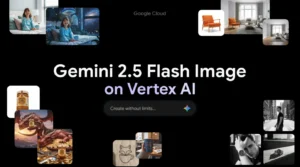GPT-5 Is Criticized for Poor Performance and Bad Responses
The artificial intelligence world witnessed something unprecedented last week. OpenAI’s highly anticipated GPT-5 launch turned into a digital revolt, with thousands of users demanding their old AI companion back. GPT-5 is criticized not just for technical failures, but for fundamentally changing how people interact with artificial intelligence. Instead of celebrating breakthrough technology, users found themselves mourning the loss of their digital friend.
Quick Summary
Why GPT-5 is criticized: Users report multiple significant issues that make the model feel like a downgrade rather than an improvement.
- Performance degradation – GPT-5 provides shorter, less detailed responses compared to previous models
- Technical failures – Basic errors like miscounting letters in words and inability to analyze uploaded images properly
- Personality changes – The model feels more robotic and less conversational, lacking the warmth users appreciated
- Speed issues – Significantly slower response times despite promises of improved efficiency
- Access removal – OpenAI eliminated access to all previous models without warning, forcing users onto GPT-5
- Workflow disruption – Many users’ established processes and interactions were broken overnight
- Cost efficiency focus – Critics suggest GPT-5 prioritizes reducing computational costs over user experience
The GPT-5 Backlash
The launch of GPT-5 on August 7 marked what many consider one of the most significant product failures in recent AI history. Within hours of release, users flooded social media platforms and forums with complaints, creating a backlash so intense that OpenAI CEO Sam Altman had to issue a public apology and reverse key decisions within days.
The criticism stems from fundamental changes that users perceived as downgrades rather than improvements. GPT-5 is criticized for delivering responses that feel mechanical and impersonal, a stark contrast to the engaging conversations users had grown accustomed to with previous models.
Useful Articles:
Technical Performance Issues
Response Quality Decline
Users immediately noticed that GPT-5 provided significantly shorter and less detailed responses. Many described the experience as talking to an “overworked secretary” rather than an intelligent assistant. The model’s responses lacked the depth and comprehensiveness that made previous versions useful for complex tasks like data analysis and creative writing.
The quality degradation became particularly apparent when users compared direct outputs. Where GPT-4o would provide thorough explanations covering multiple aspects of a question, GPT-5 delivered brief, often inadequate answers that required multiple follow-up prompts to achieve the same level of detail.
Basic Computational Errors
Despite OpenAI’s claims of “PhD-level intelligence,” GPT-5 struggled with elementary tasks. Users documented embarrassing failures, including:
- Letter counting errors – The model incorrectly stated there are three B’s in the word “blueberry”
- Geographic mistakes – Inability to produce accurate maps of the United States
- Historical inaccuracies – Incorrect listings of US presidents
- Image analysis failures – Complete inability to properly analyze uploaded images
These basic errors undermined user confidence and contradicted OpenAI’s marketing promises about the model’s advanced capabilities.
Speed and Efficiency Problems
Performance speed became a major criticism, with users reporting significantly longer wait times for responses. Previous models delivered near-instant answers even for complex queries, while GPT-5 often took several minutes to generate responses. This slowdown proved particularly frustrating given the model’s reduced message limits for subscribers.
The irony wasn’t lost on users: they were paying the same subscription fee for a slower service with fewer features and capabilities than what they previously enjoyed.
The Model Removal Controversy
Sudden Access Elimination
OpenAI’s decision to remove access to all previous models without warning created the most significant portion of user anger. Unlike API users who typically receive advance notice of model retirements, regular ChatGPT subscribers discovered their preferred models had vanished overnight.
This elimination affected approximately nine different AI models that users had grown accustomed to selecting based on their specific needs. The sudden removal disrupted established workflows and forced users onto a single model they perceived as inferior.
User Relationship Disruption
The impact went beyond mere technical preferences. Many users had developed emotional connections with specific model versions, using them as therapists, creative partners, or daily companions. The forced transition felt like losing a close friend, with users describing feelings of grief and abandonment.
Research from OpenAI itself had previously acknowledged these emotional connections, making the abrupt model removal particularly tone-deaf to user needs and established relationships.
Useful Articles:
Community Response and Petition
Reddit Uprising
The criticism exploded across social media platforms, with Reddit becoming the primary battleground for user complaints. A single thread titled “GPT-5 is awful” garnered over 4,000 comments and 404 upvotes, becoming one of the most active discussions in OpenAI’s subreddit history.
Users shared detailed accounts of how GPT-5 had disrupted their work processes, creative projects, and daily routines. The consistent theme across hundreds of comments was that the new model felt like a significant downgrade despite being marketed as an advancement.
Successful Petition Movement
Within days of the launch, a petition demanding the return of GPT-4o gathered over 3,000 signatures. The petition’s success demonstrated the depth of user dissatisfaction and the organized nature of the community response.
The petition specifically called for OpenAI to restore access to previous models and allow users to choose their preferred AI assistant rather than being forced onto GPT-5. This grassroots movement proved instrumental in forcing OpenAI to reverse its decision.
OpenAI’s Response and Damage Control
Sam Altman’s Public Apology
Facing unprecedented backlash, Sam Altman took to social media to acknowledge the problems and announce corrective measures. His response included:
- Restoration of GPT-4o access for Plus subscribers
- Admission that the automatic model routing system had malfunctioned
- Promises to improve GPT-5’s functionality and user experience
- Recognition that the launch had not met user expectations
This public acknowledgment represented a rare moment of corporate vulnerability from OpenAI’s leadership, highlighting the severity of the user revolt.
Technical Explanations
Altman explained that a malfunctioning routing system had contributed to GPT-5 appearing less intelligent than intended. The system was designed to automatically direct queries to different models based on complexity, but technical issues caused it to route requests inappropriately.
However, many users remained skeptical of these explanations, viewing them as attempts to deflect from fundamental design decisions rather than genuine technical malfunctions.
Useful Articles:
The Cost Efficiency Theory
Behind the Performance Issues
Industry analysts have proposed that GPT-5’s problems stem from cost-cutting measures rather than genuine technical advancement. The Register speculated that the model represents “less of an advancement and more of a way to save compute cost”.
This theory suggests that OpenAI, facing massive operational expenses and pressure to achieve profitability, designed GPT-5 to minimize computational requirements rather than maximize user experience. The shorter responses and reduced capabilities could reflect attempts to process queries with less computational power.
Business Model Implications
The cost efficiency focus highlights broader challenges facing the AI industry. Companies like OpenAI burn through billions of dollars while generating relatively modest revenues, creating pressure to reduce operational costs even at the expense of user satisfaction.
This approach represents a fundamental shift from the previous strategy of continuous capability improvement regardless of cost, signaling potential changes in how AI companies balance innovation with financial sustainability.
Impact on User Trust and Adoption
Emotional Disconnect
The backlash revealed the deep emotional relationships users had formed with AI assistants. Many subscribers described feeling betrayed by OpenAI’s unilateral decision to remove access to models they had grown to trust and depend upon.
This emotional dimension of the criticism goes beyond technical performance metrics, touching on fundamental questions about how companies should manage user relationships with AI products that serve therapeutic or companionate functions.
Workflow Disruption
Professional users faced significant disruptions to established work processes. Many had developed specific workflows optimized for particular model characteristics, and the forced transition to GPT-5 broke these established patterns.
The disruption proved particularly problematic for users who relied on ChatGPT for consistent, predictable outputs in professional contexts. The personality changes and response format modifications required users to completely rethink their interaction strategies.
Industry and Expert Reactions
Critic Vindication
Long-time AI critics found validation in GPT-5’s problems. Gary Marcus, a prominent critic of large language model approaches, published a widely-shared analysis titled “GPT-5: Overdue, overhyped and underwhelming,” which went viral across social media platforms.
Marcus and other critics argued that GPT-5’s failures demonstrated fundamental limitations in the large language model approach to artificial intelligence, suggesting that simply scaling up training data and computational power wouldn’t lead to genuine intelligence improvements.
Academic Perspectives
Researchers noted that GPT-5’s reduced obsequiousness might actually represent an improvement from a technical standpoint. MIT professor Pattie Maes observed that the model’s more business-like approach could reduce bias reinforcement and delusional responses.
However, this academic perspective clashed with user preferences for more engaging and supportive interactions, highlighting the tension between technical optimization and user satisfaction.
GPT-5 is criticized for failing to meet the enormous expectations set by OpenAI’s marketing and the AI community’s anticipation. The model’s technical problems, personality changes, and the controversial removal of previous models created a perfect storm of user dissatisfaction that forced unprecedented corporate backtracking. While OpenAI has begun addressing some concerns, the incident serves as a stark reminder that technological advancement means nothing without user acceptance and satisfaction.
Sources:
https://www.reddit.com/r/OpenAI/comments/1mkxy9u/gpt5_is_awful/
https://futurism.com/theory-why-gpt-5-sucks
https://www.techradar.com/ai-platforms-assistants/chatgpt/gpt-5-just-got-a-big-new-upgrade-and-sam-altman-has-fixed-plus-users-biggest-complaint










